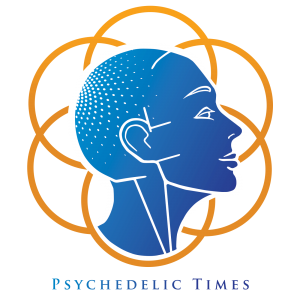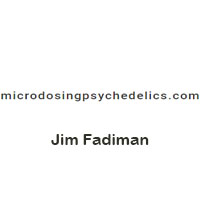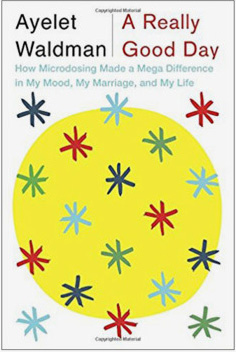Microdosing FAQ
What is Microdosing?
A microdose is a very low dose of a psychoactive substance — most commonly LSD or magic mushrooms.
The dose is too low to make users feel high — but it still has an impact on the brain. Microdoses are used a lot like nootropics to increase productivity, support the creative process, and help people feel more empathetic towards others.
Each substance has a different set of effects on the mind and body — even in lower doses.
Most people who microdose take about 10% of the standard psychoactive dose and use them over long periods of time rather than just once. The most common schedule is to take a dose every third day for about 6–8 weeks.
Microdosing is the practice of taking very small doses of a psychoactive substance — usually LSD or magic mushrooms. The dose is too small for it to produce any perceptual changes.
In other words — microdosing won’t make you high.
This comes in contrast to a conventional macro dose — which is a large dose with the goal of producing a psychedelic experience.
Microdoses aren’t used to induce hallucinations or a spiritual experience. Instead, the goal is to improve creativity, boost professional performance, increase concentration, and support deeper and longer-lasting flow-states.
What Are the Benefits of Microdosing?
The science of microdosing is still in its infancy.
The bottom line is that we simply don’t have enough long-term data to make any definitive claims about what we can expect to gain from using microdoses [3]. Most of the evidence we have at the moment come from anecdotal reports and survey-based studies.
However, there are several high-level studies in the works as we speak exploring the short and long-term benefits of microdosing psychedelics. Companies like MindMed are leading the way with this research. One of their studies on the effects of microdosing LSD for ADHD recently entered phase II of clinical testing.
With that aside, here are the main benefits commonly attributed to microdosing:
- Increased productivity
- Greater access to flow states
- More creativity & curiosity
- Higher sense of empathy & communication
- Improved focus & concentration
- More self-efficacy
- Better emotional wellbeing & connection
- More energy & coordination
- Greater sense of self-awareness
- May reduce addictive behaviors
- May support cluster headaches
- Offers protective action on the brain & neurological system
- Reduced anxiety levels
- Better rational awareness & problem solving
Results from an online survey were published in Harm Reduction Journal, quantifying the benefits of microdosing either LSD or psilocybin. The final analysis included the data of 278 individuals who self-reported the benefits they experienced, as well as a rating of subjective importance of the experience on a scale of 0–100.
Here’s what the study discovered:
The main benefits reported included improvements in mood (27% of responders), improved focus (15% of responders), more creativity (13% of responders), and a higher level of self-efficiency (11% of responders).
The Challenges of Microdosing
There are also a few challenges with microdosing. While many people find it can alleviate symptoms like anxiety or poor focus, some people report the opposite. In some cases, microdosing can trigger anxiety or make it harder to remain focused.
The main challenges of microdosing were also reported in the survey mentioned above. The most common challenges reported by responders were physiological discomfort (mainly anxiety), illegality, and lower energy levels (especially later in the day).
One study found microdoses of LSD changed participants’ perception of time.
The general concepts involved with microdosing are the same with every compound — however, each substance has its own unique spin in terms of the dose, benefits you can expect, how to take the dose, and ways to stay safe while using them.
How Much Do I Take For a Microdose?
By definition, a microdose is very small. The dose depends on the substance being used, as well as your individual size and weight.
In most cases, a microdose is around 10% of the standard psychoactive dose — or less.
Here are the typical microdoses for various substances:
Magic mushrooms — 200 mg (0.2 grams)
LSD — 8–12 micrograms
Ayahuasca — Variable Dose (6 mg Equivalent)
MDMA — 5–10 mg
Mescaline — 10–40 mg
Marijuana — 2.5–5 mg THC
Ibogaine — Variable Dose (10%)
For a more specific calculation based on your individual weight and experience level, use the calculator below.
Set Goals & Intention Before You Start (Intention)
The whole point of microdosing (for most people) is self-optimization. The motivation to use these substances depends on your individual situation. Whether that’s to help you live more presently, perform better at work or school, or to assist you with your creative endeavors is up to you.
Setting a few goals or intentions before you begin can make a big difference in seeing these improvements manifest. It doesn’t need to be too involved if you don’t want it to be. Even just taking a mental note of the kind of things you want to gain from your microdosing regimen is enough.
However, if you want to be more involved and take a proactive approach in your self-growth and discovery — there are plenty of ways to do that.
This practice is all about personal growth. Microdoses are merely a tool to help us dig deeper, cast a wider net, and accomplish more on a daily, weekly, and monthly basis.
It’s also a great way to develop and solidify new habits and routines into your life.
The best way to track your progress and goals while you microdose is to use bullet journaling methods — either on a note-taking app or in a physical notebook.
Here are some of the ways people are optimizing their growth while microdosing:
A) Journaling & Goal Setting
Before you even begin, write down your goals for microdosing in the first place. This will help keep the idea on the top of mind as you go through the process. You can write down as many goals as you want, but it’s best to keep it to 1 main goal, and 2 or 3 smaller goals.
A few goals you may want to consider:
Become proficient in a skill
Finish writing that book or blog series
Be able to sit and meditate for 1 hour everyday
Finish building that app or program
Get an A in your studies
Establish a new habit or routine
Wake up at 5am every morning
Write 6000 words everyday (yes, it’s totally possible)
It also helps to keep a journal each day to help track your progress. Again, this can be as simple or as involved as you’d like. Some people prefer to use free-form journaling, other’s like a prompt-style journal method.
This is separate from the goals you set above. Your daily journal is used to track how you’re feeling, and how you’re progressing towards those goals. You can add as many prompts as you want here, but I’ve found it’s better to keep it short or you simply won’t fill them out everyday.
For a really basic template, try using the following prompts:
Rate your mood from 1 (not good) to 10 (feeling great!)
Rate your stress levels from 1 (super-chill) to 10 (high-stress)
Describe how you’re feeling today
If you could only accomplish one thing today, what would it be?
B) Establish Healthy Habits & Routines
Starting a micro dosing regimen is an excellent time to dial in your ideal habits and routines.
Have you been meaning to wake up earlier in the mornings? Exercise or meditate more often? Drink less coffee?
Making positive changes and developing habits to improve your life and optimize towards the goals you set can dramatically increase your chances of success.
Here are some of the most common lifestyle habits and changes to consider that can increase the impact of microdosing:
Daily exercise — aim for at least 15 minutes of high-intensity or 45 minutes low-intensity per day (more is great too!)
Dietary changes — try a structured diet like the ketogenic diet, or simply cut-out sugary and processed foods
Sleep hygiene — go to bed at the same time every night and take measures to prepare yourself for sleep
Meditation or yoga — even 10 minutes per day can have a profound impact on stress and focus
Learn a new skill — microdosing is excellent for assisting learning, why not take the time to add some new knowledge along the way?
Setting a Microdosing Schedule (Timing)
Microdosing works best when done consistently over several weeks or months. When first starting out, there are three aspects of timing to consider:
What time of the day should you take your dose?
How many days should you microdose per week?
How long should you continue to microdose?
A) What Time Of The Day Should I Take A Microdose?
Even in small doses, psychedelics have a mildly stimulating effect. This means if you take them too late in the day they can interrupt your ability to fall asleep.
Most people take their microdose in the morning to prevent this.
Keep in mind, most psychedelics wear off after about 6 hours, so you’ll want to time the dose so it gives you the desired benefits when you have the most to gain from it. This depends on what intentions you set in the previous step.
For example, if you want to be more productive at work, you’ll want to take the microdose right before you start work for the day. If you don’t usually start working until late morning, it doesn’t make a lot of sense to take your dose at 6 am.
If your goal is to improve creativity and you do most of your creative work in the late afternoon or early evening, you may want to take your dose closer to lunch time so the effects overlap with your creative activities.
In general, you should avoid taking your microdose at least 8 hours before your regular bedtime. If you notice you’re having a hard time sleeping on the days you take the dose, you may need to adjust and take the dose even earlier.
B) How Many Days A Week Should I Take A Microdose?
Microdoses shouldn’t be taken every single day. Just like exercising, it’s important to take rest days.
There are a few philosophies for scheduling when it comes to microdosing:
Dr. Fadiman Standard Microdose Schedule — Dose on day 1, no dose day 2 & 3, repeat
Psychedelic work week — 5 days microdosing, 2 days off, repeat
Alternating weeks — 1 week with dose, 1 week no dose, repeat
There’s a lot of debate in the microdosing community about what the best schedule is. In truth, there’s really no “right” or “wrong” way to do it. What matters is how it feels for you. Everybody is different and will respond in kind.
If you find taking the dose for an entire workweek is too much, add an extra rest day or two, or reduce the dose. These schedules are merely guidelines — it’s up to you to tailor the experience so it works for you.
My favorite schedule is the standard set by Dr. James Fadiman (1 day on, 2 days off). He set this schedule to standardize the process of microdosing in order to collect more consistent data.
Even when the substance wears off, there’s some residual effect. I find that after about 2 weeks of microdosing, I continue to feel the same benefits even on the rest days.
C) How Long Should I Continue To Microdose For?
When combined with goal-setting and intention, the effects of a microdose become stronger over long periods of time. It’s best to look at the improvements of microdosing as a long-term, gradual gain. It takes at least 2 weeks to develop new habits and it can be even longer before you’re able to get into productive flow states on command.
With that said, it’s important to take some breaks from microdosing as well.
Most people will microdose for 6 to 8 weeks consistently, followed by a break of about a month or two.
Microdosing Magic Mushrooms (Psilocybin)
Magic mushrooms are the most common substance people use today as a microdose. They’re easy to take and there’s a lot of research on the specific benefits and safety of using this substance.
How it Feels
- Improved focus & concentration
- Increased creativity
- Greater sense of empathy
- Improved mood
What’s a the Typical Microdosing?
The usual microdose of magic mushrooms is between 0.2 and 0.5 grams (200 to 500 milligrams).
Begin by weighing out the desired dose in raw, dried mushrooms, or take the dose as a capsule. All you need to be able to microdose shrooms is a small scale.
If you want to make your own capsules, you’ll need a scale, a capsule machine (cheap, but optional), and some empty gel capsules. Many people make their own microdose capsules that include other compounds as well, such as ginger powder, L-theanine, L-tyrosine, or L-tryptamine.
You can also order premade microdose capsules online.
There are several different species of magic mushrooms, each with separate concentrations of psilocybin. This can affect how much you should use for an equivalent microdose. The most common species, by far, is Psilocybe cubensis. Which should be used at a dose of around 200 to 500 mg.
Microdoses For Different Species of Magic Mushrooms:
| Species Name | Psilocybin Content | Microdose Range |
| Psilocybe cubensis | 0.60 – 1% | 100 – 500 mg |
| Psilocybe azurescens | 1.78% | 50 – 300 mg |
| Psilocybe semilanceata | 1.28% | 100 – 350 mg |
| Psilocybe weilii | 0.61% | 200 – 800 mg |
| Psilocybe cyanescens | 0.85% | 200 – 500 mg |
| Psilocybe baeocystis | 0.85% | 200 – 500 mg |
| Psilocybe bohemica | 1.34% | 100 – 300 mg |
| Psilocybe tampanensis | 0.68% | 200 – 800 mg |
| Amanita muscaria | 0% | Not Appropriate for Microdosing |
Microdosing LSD
LSD (lysergic acid diethylamide) is, by far, one of the most popular psychedelics in the world. It was made famous in the 1960s by public figures like Timothy Leary, Ram Dass, and brothers Dennis and Terrence McKenna.
This psychedelic comes in the form of small squares of blotter paper coated in the liquid LSD. The tabs are placed under the tongue and absorbed through the mucus membranes and microcapillaries in the mouth.
This is the second most popular substance for microdosing. It’s readily available, has a high level of safety, and there’s plenty of research to back up its suggested benefits.
How it Feels
- Boost in energy and focus
- Increased clarity of thought
- Lower appetite
- Frequent flow-states
What’s a Typical Microdose For LSD?
The usual microdose for LSD is between 8 and 12 micrograms.
A standard tab of acid contains between 60 and 100 micrograms each depending on the purity and potency. Acid will degrade if stored incorrectly or for long periods of time.
In general, a microdose is about 1/8th of a tab of acid — so the easiest way to prepare microdoses is to cut a single tab into 8 pieces.
Using a razor blade, cut the tab into quarters, and then cut each quarter in half.
What’s a Typical Microdose For LSD
The usual microdose for LSD is between 8 and 12 micrograms.
A standard tab of acid contains between 60 and 100 micrograms each depending on the purity and potency. Acid will degrade if stored incorrectly or for long periods of time.
In general, a microdose is about 1/8th of a tab of acid — so the easiest way to prepare microdoses is to cut a single tab into 8 pieces.
Using a razor blade, cut the tab into quarters, and then cut each quarter in half.
Microdosing MDMA
MDMA (Methylenedioxymethamphetamine) is an amphetamine-based drug. It’s a stimulant that works primarily through the serotonin receptors in the brain.
MDMA is technically classified as a psychedelic, but it’s effects are unique from any of the other psychedelics on this list. It activates the same serotonin receptors as magic mushrooms and LSD, but with a different focus.
Only high doses of MDMA (not recommended) produce psychedelic effects, but the hallucinations it produces are still much milder than any of the other classical psychedelics.
Some people report microdoses of MDMA help them feel more connected with the people around them, elevates their mood, and helps alleviate symptoms of post-traumatic stress disorder, anxiety, and depression. However, more research is needed to understand whether MDMA is safe long-term.
How it Feels
- Higher mental and physical energy
- Better focus and concentration
- Elevated mood
- Improved sense of empathy
Is MDMA Safe To Microdose?
There’s a lot of debate whether it’s safe to microdose MDMA or not. This compound has an affinity for a particular type of serotonin receptor called the 5-HT2B receptor — which is found in high concentrations in the heart. It’s thought that activating this receptor too frequently could lead to heart valve disorders.
At the moment, this is purely theoretical. We don’t have enough data yet to definitively say whether low dose, repetitive MDMA can lead to heart valve disease or not.
However, due to the higher level of risk, microdosing MDMA isn’t recommended. If you’re still interested in microdoses of MDMA anyway, it’s important to limit the number of times you take it to just two or three doses per week, and stop after 3 or 4 weeks with a long rest period in between.
Microdosing Ayahuasca
Ayahuasca is a combination of two Amazonian plants — the ayahuasca vine (Banisteriopsis caapi), and a source of DMT (usually Psychotria viridis or Mimosa pudica). When mixed together, the combination produces a powerful psychedelic experience.
Ayahuasca isn’t a common substance to microdose, but it offers all the same benefits as the other classical psychedelics — with a few extras.
How it Feels
- Improved sense of connectedness
- A greater level of empathy towards others
- More creativity & vision
- Colors may appear more vibrant
- More frequent flow-states
How Ayahuasca Works
Most psychedelics target the serotonin receptors to produce their effects. Ayahuasca does this as well, but it also contains another ingredient that inhibits an enzyme called monoamine oxidase — which is responsible for breaking down monoamine neurotransmitters like dopamine, serotonin, and norepinephrine. This gives ayahuasca microdoses the added benefit of improving focus, concentration, and mood that other psychedelics simply don’t offer.
The DMT portion of ayahuasca provides the same benefits as psilocybin or LSD, while the MAO inhibitor offers more specific benefits towards mood and concentration.
What’s a Typical Microdose For Ayahuasca
Finding the right amount of ayahuasca to take for a microdose can be challenging. Every ayahuasca brew is going to have different potencies. It really depends on what ratios the person who made it used, as well as the quality of the raw ingredients.
You may have one bottle of ayahuasca that provides an effective microdose with just 2 mL of liquid, but another bottle may require 5 or 6 mL instead.
The goal is to take the equivalent of around 6 mg of DMT — but it’s very difficult to assess how much liquid you’ll need to hit this dose without high-tech mass spectronomy to determine the exact potency of the brew. If you’re making ayahuasca yourself it’s unlikely you’re going to have access to this equipment.
The best way to find a microdose of ayahuasca is to start with a very low dose (much less than you think you’ll need) and increase gradually over time until you find what works.
Start with 1 mL of the liquid on the first day. See how you feel, and then increase by 1 mL for each consecutive dose until you notice mild perceptual changes. If you can feel the effects of the ayahuasca, the dose is too high. Once you notice some breakthrough effects, you’ve found the threshold for the ayahuasca you’re using. Dial the dose back to the last dose you took that didn’t have these effects — this is your microdose moving forward.
Microdosing Mescaline
Mescaline is the active ingredient in psychoactive species of cacti — including peyote, San Pedro, and Peruvian torch cactus.
This psychedelic isn’t as popular as it used to be — but not because it’s not as useful as the more common psychedelics. The reason most people don’t take mescaline is because its raw forms (the psychoactive cacti) require a high dose in order to reach psychoactive thresholds. You need to consume several grams of the raw cactus at a time to achieve psychoactive doses. This much cactus can often upset the stomach and has a very disagreeable taste and texture.
None of this is an issue when it comes to microdosing. It’s relatively easy to take low-dose mescaline in the form of raw psychoactive cacti.
This substance is great for inducing creative flow states, supporting deep meditation, and focusing on being more aware and present in your daily life.
Mescaline is especially grounding and has a strong tendency for making people feel more present an “in the moment” than most of the other psychedelics.
How it Feels
- Reduced stress & anxiety (some report higher anxiety also)
- A greater sense of empathy and connectedness
- More energy & mental endurance
- Better focus & concentration
- A greater sense of wellbeing & happiness
What’s a Typical Microdose For Mescaline
The typical microdose of pure mescaline is between 10 to 40 mg. There are several different forms of mescaline, each containing a different concentration of the pure active ingredient.
Here’s a quick breakdown of the equivalent dose for different forms of mescaline and mescaline-containing cacti:
| Source of Mescaline | 10 mg Equivalent Dose | 40 mg Equivalent Dose |
| Pure Mescaline Freebase | 10 mg | 40 mg |
| Mescaline Hydrochloride | 11.7 mg | 46.8 mg |
| Mescaline Sulfate | 13.2 mg | 52.8 mg |
| Peyote Cactus (Dried) | 0.8 grams | 1.5 gram |
| San Pedro Cactus (Dried) | 1 gram | 2 grams |
| Peruvian Torch Cactus (Dried) | 3 grams | 5 grams |
Microdosing Cannabis
Cannabis isn’t psychedelic, but it does have psychoactive effects due to an active ingredient called THC (tetrahydrocannabinol). THC works through a series of specialized receptors in the brain called endocannabinoid receptors. These receptors regulate a wide range of neurological functions ranging from appetite, pain transmission, mood, and more.
Cannabis has a lot of health benefits. It’s used to alleviate pain, support anxiety, improve sleep, and stimulate the appetite.
But many people don’t want the high that comes along with a standard psychoactive dose of cannabis products.
Taking low-doses of marijuana has been shown to offer many of the same benefits as regular doses, without the high. Additionally, low-dose THC has actually been shown to offer a greater level of benefit towards managing symptoms such as anxiety, sleep, and low-grade pain.
Some people choose to use a different isomer of THC that naturally has a lower tendency towards anzious side-effects instead called delta 8 THC.
Animal studies have even shown that long-term, low-dose THC offers a protective action on the brains of mice. It’s thought that repeated microdoses of THC can help ameliorate the progression of neurodegenerative disorders like Parkinson’s disease, Alzheimer’s disease, or multiple sclerosis.
How it Feels
- Reduces the sensation of pain
- Less feelings of nausea
- A feeling of being relaxed & care-free
- Improved focus & creativity
What’s a Typical Microdose For Cannabis?
The standard psychoactive dose of marijuana is 10 mg. Anything above this is virtually guaranteed to make users feel high. Anything less than 10 mg is considered a low dose.
For microdosing, the standard range is between 2.5 and 5 mg of THC.
Several studies have shown that combining equal portions of the non-psychoactive cannabinoid, CBD (cannabidiol), along with the THC provides even greater benefit.
The best way to microdose marijuana is to use an edible or oil that contains a low dose of THC. Look for products that contain a 1:1 ratio of THC to CBD.
Microdosing Ibogaine
Ibogaine is a psychoactive indole alkaloid produced in a variety of African plant species — most notably Tabernanthe iboga.
This plant medicine has been used in traditional medicine for thousands of years and has become popular in the 21st century for treating addiction and depression in a similar manner as ayahuasca.
It’s not as easy to microdose ibogaine as it is with most of the other psychedelics. The potency of ibogaine can vary significantly depending on which plant was used, and how the extract was made.
Additionally, everybody responds differently to ibogaine, so it’s hard to determine the best dose before trying it yourself.
How it Feels
- Increased clarity of thought
- A greater sense of introspection (sometimes too much)
- Sense of empathy & connectedness
What’s a Typical Microdose For Ibogaine?
You should never attempt to microdose ibogaine without first speaking with someone who has experience with this plant.
The dose of ibogaine can vary substantially from one product to another, which makes it easy to take too much. Ibogaine can be dangerous at psychoactive levels and requires an experienced guide to use it safely.
With that said, most people find 1 gram of dried root bark of the Tabernanthe iboga plant to be a good jumping-off point for ibogaine microdoses.
You can also use concentrated tinctures, which are usually made at a ratio of 1:50. You only need about 2 drops of this tincture for an effective microdose.
Concentrated ibogaine extract is also available. The usual starting dose with this extract is about 50 to 100 mg. However, it’s wise to start with a much lower dose first — around 25 mg — to see how you respond before increasing the dose on a separate day.
Is Microdosing Dangerous?
The most prominent researcher in the field of microdosing psychoactive substances is Dr. James Fadiman. He’s spent decades exploring the short and long-term benefits and safety of microdosing various substances.
When it comes to classical psychedelics, including psilocybin (magic mushrooms), LSD (acid), mescaline, and DMT — Fadiman is adamant that these substances are very safe.
Albert Hoffmann, Ph.D. — the man who invented LSD — took microdoses of the substance for most of the later years of his life. He lived to the ripe old age of 102.
Countless others have used, or continue to use low-dose LSD, psilocybin, and mescaline on a consistent basis with no signs of issue that can be linked to the psychedelic itself.
There is little to no evidence that microdosing is dangerous.
With that said, there are some theoretical issues with taking even small doses of certain compounds over long periods of time — such as MDMA.
Potential Side-Effects of Microdosing
There are a few side-effects to microdosing as well. Some of these side-effects are contradictory to the suggested “benefits” of the practice.
Everybody reacts differently — one person may find microdosing effectively eliminates their anxiety, while another may experience even higher feelings of anxiety as a result.
The biggest risk to using psychedelics, by far, is accidentally macrodosing (taking a psychoactive dose). This is why it’s important to take the time to understand the correct dose of any substance you’re using and start with a dose that’s much lower than you think you need for the very first session.
Once you get a feel for how the substance affects your body individually, you can tweak the dose to optimize its effects.
Here are the potential side-effects of microdosing:
- Disruptions in sensory information (sight, sound, & touch)
- Changes in temperature regulation (feeling hot or cold)
- Numbing or tingling in the limbs & fingers
- Digestive system discomfort
- Reduced appetite
- Headaches
- Increased anxiety
- Imparied focus & distraction
- Lower energy levels (especially common later on in the day)
- Irritability, discontent, & sadness
- Social interference, awkwardness, & difficulties expressing oneself
- Confusion & disorientation
What Happens If I Take Too Much of a Microdose?
Taking too much of a microdose is the most common problem with microdosing.
When this happens, you’ll experience the psychoactive effects of the substance itself — much like taking a smaller macrodose.
Depending on how much you took, you may feel high and may become unfit to drive or to work.
It’s important to know your dose, know about the substance you’re using, and to start with a conservative dose for the first session. Once you’ve gotten a better understanding of how the substance works you can work on tweaking the dose for optimum effects.
Is Microdosing Legal?
Most psychedelic substances are illegal.
It’s more than likely that microdoses are illegal where you live.
The exception may be marijuana or THC if you live in a legal state, or countries like Canada where marijuana is legal for anybody above the legal age limit.
Can Microdosing Make Me Fail A Drug Test?
Microdosing can make you fail a drug test.
Some substances, like THC, can be detected in the bloodstream several days after taking a dose. While the concentrations are usually too low to trigger a failure on a drug test, it remains a possibility.
Other substances, such as LSD or magic mushrooms, are completely eliminated from the body within a day or two. It’s extremely unlikely that you’ll fail a drug test from these substances as long as you didn’t take the dose the same day as the test. But it still remains within the realm of possibilities that you’ll fail the test.
If you’re regularly tested at work or are subject to random drug tests, you should avoid microdosing.
If you’re given at least 2 weeks’ notice before your test, this should be plenty of time to stop taking the microdoses and allow all traces of the drug to be eliminated from the body before taking the test.
Entheogen-assisted Healing
Taking entheogens can be like air travel: people do it all the time, it’s usually fine, but when it’s not fine, it’s sometimes very bad. We’ve been there. And that’s where an experienced guide can make the difference in the outcome.
Interested in how to integrate what you learn in your journey? Ask for our Integration Guide PDF booklet.
We offer consultation by phone if you want to ask questions of ANY nature. Or do you know someone who is interested? In either case use this link to schedule a call HERE.








